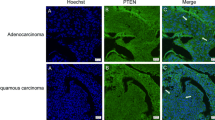Abstract
Purpose: To determine the expressive patterns of the components of the plasminogen activator system in human large-cell lung carcinoma strains and to analyze the effects of the patterns on tumor invasion and metastasis. Methods: The in vitro and in vivo invasive and metastatic potential of two human large-cell lung carcinoma strains with high (strain 95D) and low (strain 95C) metastatic potential was further confirmed by the Boyden chamber model and nude mice model. After this, the expressions of the components of the plasminogen activator system – including urokinase-type and tissue-type plasminogen activator (uPA and tPA), urokinase receptor (uPAR), and type-1 and type-2 plasminogen activator inhibitor (PAI-1 and PAI-2) in strain 95D and 95C cells – were determined by RT-PCR and immunohistochemical staining. The effects of monoclonal antibodies of uPA, uPAR, and PAI-1 on the invasive potential of strain 95D cell line were also evaluated. Results: Strain 95D cells were found to have a stronger in vitro and in vivo invasive and metastatic potential than strain 95C cells. In the former, the average number of infiltrating cells in the in vitro model in one field of vision (40055) was 73.75 ± 7.42, while in the latter, it was 56.33 ± 6.28 (P < 0.001). Lung metastatic loci were observed in all six nude mice inoculated with 95D cells (6/6), but not in any of the nude mice inoculated with 95C cells (0/6). The high-metastatic strain 95D cells expressed higher uPA and uPAR and lower tPA and PAI-2 than the low-metastatic strain 95C cells. The PAI-1 expressions in both 95D and 95C cells were almost the same. Monoclonal antibodies of uPA and uPAR greatly reduced the invasive potential of strain 95D cells in vitro. Conclusions: These data suggest that the invasive and metastatic potential of human large-cell lung carcinoma cell lines is associated with differential expressions of the components of the plasminogen activator system and that the determination of these components may be used as a marker for judging clinically the possibility of tumor metastasis as well as the prognoses of patients.
Similar content being viewed by others
Author information
Authors and Affiliations
Additional information
Received: 31 January 2000 / Accepted: 18 July 2000
Rights and permissions
About this article
Cite this article
He, C., He, P., Liu, LP. et al. Analysis of expressions of components in the plasminogen activator system in high- and low-metastatic human lung cancer cells. J Cancer Res Clin Oncol 127, 180–186 (2001). https://doi.org/10.1007/s004320000192
Issue Date:
DOI: https://doi.org/10.1007/s004320000192




